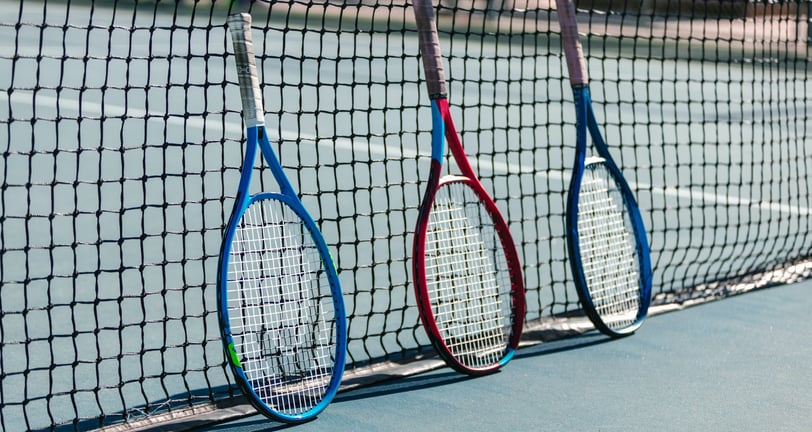Choosing the Right Tennis Racket
Discover the key factors to consider when selecting a tennis racket that suits your playing style. Find the perfect balance of power, control, and maneuverability.
EQUIPMENT
9/15/20233 min read


Selecting the right tennis racket is a crucial decision for players of all skill levels. The racket you choose can significantly impact your game, affecting your power, control, and overall performance on the court. With countless options available, finding the perfect racket can be overwhelming. In this comprehensive guide, we will break down the key factors to consider when choosing a tennis racket to help you make an informed decision.
1. Grip Size
One of the first aspects to consider is the grip size of the racket. A proper grip size ensures comfort, control, and injury prevention. To determine your ideal grip size, follow these steps:
Hold the racket in your dominant hand.
Slide your index finger between your palm and the fingertips. If there is enough space to fit the index finger comfortably, the grip size is right for you.
Avoid a grip that is too large, as it can lead to wrist and forearm strain. Conversely, a grip that is too small may cause difficulty in controlling the racket.
2. Racket Length
The standard length for tennis rackets is 27 inches. However, extended-length rackets (27.5 inches or longer) are available and can provide additional reach and power. Shorter rackets (26 inches or less) are suitable for junior players. Your choice should be based on your playing style and comfort.
3. Head Size
Tennis rackets come in a range of head sizes, typically classified as:
Oversize (110-115 sq. in.): Offers more power and a larger sweet spot, making it suitable for beginners and players seeking forgiveness on off-center hits.
Midplus (95-105 sq. in.): Strikes a balance between power and control, ideal for intermediate players.
Midsize (85-90 sq. in.): Provides maximum control and precision but requires excellent technique and control.
Choose a head size that aligns with your playing style. Beginners may benefit from an oversize head, while advanced players may prefer a midplus or midsize head for enhanced control.
4. Racket Weight and Balance
Racket weight and balance significantly affect your game:
Weight: Lighter rackets (less than 10 ounces) are maneuverable and provide easy power, making them suitable for beginners. Heavier rackets (10-12 ounces) offer more stability and control, but they require greater strength and technique.
Balance: Rackets can be balanced head-light, head-heavy, or even-balanced. Head-light rackets offer greater control, while head-heavy rackets provide more power. Even-balanced rackets strike a balance between the two.
Consider your physical condition and playing style when choosing the weight and balance of your racket.
5. String Pattern
Rackets feature different string patterns, typically denoted as "open" or "closed."
Open String Pattern: Offers more spin and power due to larger gaps between strings. Ideal for players looking to generate topspin.
Closed String Pattern: Provides better control and precision but sacrifices some power and spin potential.
Select a string pattern that complements your playing style, keeping in mind that you can customize string tension to fine-tune your racket's performance.
6. Material and Construction
Rackets are constructed from various materials, such as graphite, aluminum, and composite materials. Graphite rackets are popular for their balance of power and control, while aluminum rackets are often more affordable but less durable.
Consider your budget and how frequently you play when choosing the material and construction of your racket.
7. Demo Rackets
Before making a final decision, consider trying out demo rackets from local tennis shops or clubs. This hands-on experience allows you to assess how a racket feels in action, helping you make a more informed choice.
Conclusion
Choosing the right tennis racket is a crucial step in maximizing your potential on the court. Take the time to assess your playing style, physical attributes, and personal preferences before making a decision. Testing demo rackets and seeking advice from experienced players or coaches can further aid your selection process. Ultimately, the perfect tennis racket should feel like an extension of your arm, enhancing your game and enjoyment of this dynamic sport.
© 2023 BaselineBros.com - All Rights Reserved.
